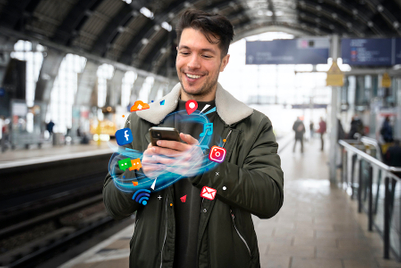
Waggener Edstrom released metrics it gathered on the event, which took place 23-25 March, as a demonstration of its proprietary tool called WE twendz pro. Team USA, England, Canada, Kenya and Spain garnered the most attention across the Twitterverse, while many fans also talked about players such as Peter Tiberio, Michaela Staniford and Alice Richardson.
Meanwhile, sponsors HSBC and Cathay Pacific managed to leverage their association with the event and create buzz and influence despite there being 15 supporting brands in total. In the following table showing share of conversation on Twitter in the days leading up to the event, a spike for HSBC and other sponsors are clearly visible.
| Brand | Percentage | Date | Brand | Percentage | |
| 8-18 March | HSBC | 68 | 19-28 March | HSBC | 95 |
| Cathay Pacific | 32 | Cathay Pacific | 4 | ||
| Carlsberg, EMC, Telstra | 1 |
Waggener Edstrom is bullish about research and analysis, and keen to connect communication activities with measurable outcomes, Nathan Misner, senior vice president and Asia-Pacific digital lead, told Campaign Asia-Pacific. But the company saw a lack of tools for performing such measurements. While plenty of tools exist for counting web traffic, none connected traffic to influence or the way stories travel, he said.
A team tasked with filling that gap developed WE twendz pro, which studies the use of key, client-defined terms. "A lot of tools do that, but we've added an influence lens or filter to it, which looks not only at the number of followers or retweets, but also total reach, exposure, and resonance," Misner said. The tool also has built-in sentiment analysis, which encodes the traffic as positive, negative, or neutral.
Specifically, the tool delivers measurements of:
- Velocity: The hourly rate of relevant tweets
- Resonance: The ratio of positive to negative tweets
- Exposure: The average number of followers and tweets per hour
- Engagement: A weighted ratio of replies, retweets, questions, links, and hashtags.
"It's how we listen for brands and determine which communication opportunities should be prioritized," Misner said.
After a major news announcement, for example, the company will use the tool to monitor conversations. "For most clients, we know who the main bloggers and social influencers are," Misner said. "But when things get hairy around a crisis, we want to see velocity, and which second-level influencers are effecting the conversation. That way, if there is something incorrect in a story or tweet, or if there is context that might help that influencer's understanding, we can provide additional information."



.jpg&h=334&w=500&q=100&v=20250320&c=1)


.jpg&h=334&w=500&q=100&v=20250320&c=1)
.png&h=334&w=500&q=100&v=20250320&c=1)
.jpg&h=334&w=500&q=100&v=20250320&c=1)






.jpg&h=268&w=401&q=100&v=20250320&c=1)
.jpg&h=268&w=401&q=100&v=20250320&c=1)
.jpg&h=268&w=401&q=100&v=20250320&c=1)

.jpg&h=268&w=401&q=100&v=20250320&c=1)